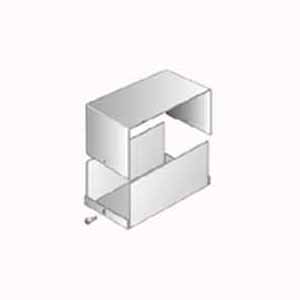I was thinking about designing an enclosure for the smart-USB cable adapter project and thought of some cool solutions to noise.
Challenge
Any type of serial cabling/adapter in a typical 3D printer setting is susceptible to electromagnetic noise induced from the stepper driver circuits. The usual solution for a serial cable is internal metallic shielding or a ferrite core around it.
If you've just created some sort of male/female USB adapter device within this venue, it's good to shield it as well from interference. In fact, here in the US at least the FCC demands in many cases that products be shielded so that they don't interfere with other well-funded industries like radio/television, for example.
Old-school Solution
For decades, the solution would have been to enclose the circuit in a metal case and connect a ground wire to it. At $9.99 this is too expensive for an adapter, in my humble opinion. You want the entire project cost to be reasonably small.

The "New New Thing"
We ought to be able to design and print a 3D enclosure which more closely matches the size of the project and which also satisfies the shielding requirement.
Version 1
The first version then would require a dual-extruder printer (which I don't have yet). You could design a part which uses conductive filament. In theory, one should be able to incorporate a shell (embedded or not) which surrounds the containment cavity. If you design the shell as the inside of the cavity and design in the threads for a ground screw, this should work nicely. The filament spool is expensive but you can buy a loose coil of it for $15 plus tax/shipping.
Version 2 (for the win?)
The cheapest shielding is aluminum foil. It's essentially what's inside an expensive serial cable anyway. In theory, you could design a thin empty space inside the walls of an enclosure and then just slip a cut strip of aluminum foil into that space (probably pausing the print job to do so). It's best if it's connected electrically to the other strips but that's not absolutely required.
If the internal cavity of your project isn't involved, you could even apply rectangles of aluminum foil with a little glue to each inside surface.
Version 3
Of course, you could go fancy and apply a thin coat of something conductive to the inside surface and then electroplate it in a bath of chemicals.
Version 4
Actually, you might be able to get away with spray painting the entire outside surface with a conductive paint.
I'm reminded of the inside of old PC cases from decades ago. They had some innovative ways of containing electronic noise for the sake of FCC requirements.